Al's gritty mix recipe
Hello
I'm looking for the recipe for Al's gritty mix potting soil. Can somebody help me out here?? Thanks.
Comments (142)
litterbuggy (z7b, Utah)
6 years agoThanks, Tropic. I only need maybe 10 gallons per season, but Ewings, home improvement, hardware, and agricultural supply operations (no Agway out here) don't carry bulk bark and have let me down for 5:1:1 fines, so landscape suppliers will be first on my shopping list next season. One garden store in town carries bulk products that I thought were too fine, but now I think I'll go back to see if it's decomposed enough to be good for 5:1:1 without making me go through too many dust mask filters. My guess is that 10 or so gallons of material (before sifting) would be enough for a season.
Kyle
6 years ago"When mean temps are between 65-80, I fertilize most plants at 2 tsp 9-3-6 per gallon of water.
Al"
Paging Al. Or I welcome any one to comment also.
I'm currently using DG Foliage Pro and loving the results. I am applying 1 tsp/gal. at every watering. All my plants are looking great. Question is: am I risking salt burn and how would I recognize it if so? Any other issues I should be concerned about?
Thanks.
Related Professionals
Panama City Landscape Architects & Landscape Designers · Rancho Cordova Landscape Architects & Landscape Designers · Brooklyn Park Landscape Contractors · Gurnee Landscape Contractors · Hawaii Landscape Contractors · Mesa Landscape Contractors · Rockland Landscape Contractors · Woodbury Landscape Contractors · North Aurora Landscape Contractors · Eastvale Window Contractors · Baker Window Contractors · Hialeah Gardens Window Contractors · Natick Fence Contractors · South Miami Fence Contractors · Winnetka Fence Contractorstapla (mid-Michigan, USDA z5b-6a)
6 years agoThat was to be "at 2 tsp per gallon of water, once weekly when mean temps are 65-80". Not so much with the FP products though, because they don't use urea. When using fertilizers that derive their N from organic sources when cool temps prevail, the potential for ammonium toxicity increase significantly. In fact, soggy or compacted soils also increase the potential for ammonium toxicity, even when temps are optimal.
I'd say you're flirting with some potential damage at 1 tsp/gallon every time you're watering, unless you're flushing the soil as you water, so at least 15-20% of the total volume of water you apply exits the drain hole. I think it's likely fine when conditions are very favorable and the plant growing robustly, but when conditions aren't so favorable is when to watch closely for symptoms.
Look for fertilizer burn in new foliage on the sunny side of the plant. That would be the S side in northern hemisphere & N side in southern.
I have a newly purchased Korean hornbeam that I didn't fertilize at all during our recent week-long stretch of temps near 100* daily. It has a LOT of foliage damage just from the heat. I'm sure the heat cooked the roots in its unshaded black nursery can (and I KNOW hornbeam roots are quite sensitive to heat). I'll need to hope now that root rot doesn't kill the plant. I dosed it with a fungicide drench yesterday to help in that regard, but I won't really know until spring when it wakes up ........ or doesn't.
Al
Kyle
6 years agolast modified: 6 years agoThanks, Al. I just started using plain water for a flush. Then I'm going back to 1 tsp/gallon DGFP and watching. This is for my indoor plants, btw.

Good luck on the Korean hornbeam. They are beautiful. Here's mine:
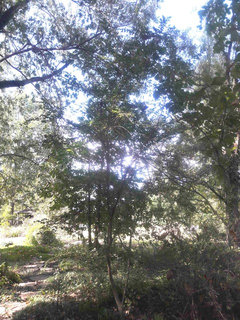


litterbuggy (z7b, Utah)
6 years agoAl, what does 'flushing every time you water' mean, exactly? Flushing with plain water before watering with fertilizer solution, or watering with fertilizer until 15-20% of water exits the pot? I've been doing the latter, and the plants look good, but I'll give them all a good flush with R/O water and water the other way if I'm doing it wrong.
tapla (mid-Michigan, USDA z5b-6a)
6 years agoThere are 2 reasons regular flushing of the soil is an important part of your care regimen. The first is, it prevents the concentration of nutrients in the soil (E.C./TDS) from continually increasing, as it does when we water in small sips to avoid over-watering. Second, and just as important, is the fact that it keeps the ratio of nutrients in the soil solution from becoming badly skewed. While this isn't as consequential when using fertilizers with ratios that closely mimic the plants actual usage of nutrients, it's a weighty issue when using fertilizers that don't.
10-15-10 is a widely used houseplant fertilizer, even though it has much more P than plants want or need. If we aren't flushing the soil, the excess P in the soil solution becomes increasingly critical and out of balance with every fertilizer application, and soon reaches concentrations that prevent the plant from taking up a sufficient amount of Fe (iron), primarily, but other nutrients as well, to a lesser degree. These 'created' shortages of nutrients are called antagonistic deficiencies. The excess P also unnecessarily increases the o/a concentration of nutrients required to ensure plants get enough of each nutrient. Ideally, we would keep the level of nutrients as low as possible w/o being so low there are deficiencies. It's impossible to achieve that end if we aren't using a fertilizer that mimics actual nutrient usage.
You can flush with tap water or deionized water, deionized being the better choice if available, or, you can flush with fertigation solution. As long as you're making sure that at least 15-20% of the total volume of water applied exits the pot, ratios in the soil solution won't get too badly skewed, especially when using something like 9-3-6, 12-4-8, 24-8-16, etc.
Al
litterbuggy (z7b, Utah)
6 years agolast modified: 6 years agoThat's a relief, Al, because that's what I've been doing--generously 'flushing' with the Foliage Pro solution. As an aside, I only recently realized that for some reason I've been using more fertilizer in the summer than you recommend (two tsp/gallon instead of one), so I've cut it back. It's about time to go to half a tsp for the winter anyway...
tapla (mid-Michigan, USDA z5b-6a)
6 years agoI use about 2 tsp/gal/wk (9-3-6) all summer when temps allow.
Al
litterbuggy (z7b, Utah)
6 years agoThanks, Al. Every once in a while I just make things up, so it's good to get confirmation.
When you get a minute, how much FP do you use in the winter--1 tsp or 1/2 tsp/ gallon/week? Light's not good inside during the winter and new growth slowed down once I brought the plants in, so I should probably cut back.
tapla (mid-Michigan, USDA z5b-6a)
6 years agoI have everything under lights in the winter and the temp is steady at 68*, humidity 55-60%. I fertigate with every time I water with 1/4 tsp 9-3-6/gallon of r/o water.
Al
litterbuggy (z7b, Utah)
6 years agoI'll do the same then, since I want to emulate my sensei wherever possible (only half kidding!). Temps inside are about the same here, but humidity is somewhat lower even indoors, probably averaging 40 at night unless snow is melting in town or there's a severe inversion & 20-40 during the day with the same caveats. Now that my visitors have left I can get cracking on installing more lights, because half a dozen bulbs didn't do it now that I've learned how light affects my green things.
I like my new 5:1:1, and I think the rooted ficus cuttings do too. It needs to be tilted after watering, and it's still selling in, but it definitely holds moisture nicely without seeming soggy.
Kyle
6 years agoAl, could you expand a little here on the r/o water or direct to a discussion thread. Very interested. Importance and how to get it? Thanks.
tropicofcancer (6b SW-PA)
6 years agoAl has this one: https://www.bulkreefsupply.com/5-stage-75gpd-plus-ro-di-system-bulk-reef-supply.html
R/O removes dissolved salts from tap water. Eg my tap water ppm is about 150. So the starting ppm (parts per million) of dissolved salts in water is very low. Rain water also has very low base ppm. Both are very effective in flushing the soil of accumulated salts from fertilizer. And when using fertilizer with such pure water it is better for the plants since the effective ppm is much lower. Roots absorb nutrients better at lower ppms.
Al may have more insight into this than I do. I use collected rain water for fertilizing in summer. Before shutting of the collection system in winter I transfer about 100 gallons of rain water to three barrels (35 gallon each) and store them in the basement. I use that for fertilizing my plants in winter - although it is not nearly enough. But water requirement during winter is also much lower.
tapla (mid-Michigan, USDA z5b-6a)
6 years agoI think that covers it well, ToC. I make all my drinking water with the r/o system, too. It's VERY inexpensive to operate. All I've had to replace in more than 5 years is a sediment prefilter, and it was under $5. When it's operating, it produces about 1 gallon of r/o water with 0 ppm dissolved solids every half hour. I usually fire it up in the morning of a day I know I'll be home, and set my phone timer for 30 minutes (I collect it in 1 gallon jugs for plants) to remind me to change the collection container. I also keep on hand a 5 gallon container for the plants as a reserve - in case I run out of water in gallons for plants before I run out of drinking water, which I keep refrigerated, so I make about 6 gallons of drinking water at a time, which lasts me about 2 weeks.
Allitterbuggy (z7b, Utah)
6 years agoBTW, the company TOC linked to is running a 10% off sale on its RO systems.
I really want one of these but the budget is tight, so I'm trying to find the option that will do the job for the fewest $$$.
I've sent Bulk Reef Supply some questions, but my question for you experienced R/O system users is whether I should pay $50 for the accessories on the "plus" package given that I don't want to pay for a body of stuff I'm never going to use. I'm pretty sure I need the flush kit and test strips, but I'm not sure whether the pressure gauge and dual-line TDS meter are necessary to keep the system running, and I have no idea what most of the other items even are. What do you think?
Chlorine test stripsGlycerine filled pressure gauge
Flush kit
Dual inline TDS meter
Ball valve
Drain saddle clamp
EZ angle stop adapter
Self-piercing saddle valve
tapla (mid-Michigan, USDA z5b-6a)
6 years agoMy set-up has the TDS meter. I only use it very occasionally to make sure the system's outflow TDS is 0 PPM. W/o one, there's no way to tell. The flush kit came with my system, and I do flush for 10 minutes before & after each filtering session. I had no need for a drain saddle clamp because the effluent goes into my sump hole, but a laundry tub would work as well. I did use the self pierce saddle valve to tap into a copper supply line. Won't work for PVC plumbing. Not sure what the chlorine strips are for. A lot of fish/aquarium folks use r/o systems, so maybe that. Not sure what the ball valve might be for, either. If you know your water supply pressure is over 40 lbs/sq in, you don't need a pressure valve. .... no idea what an angle stop adapter is.
Allitterbuggy (z7b, Utah)
6 years agoThanks, that's more info than I had! BRS says the four stage system will handle chloramine, though I'll have to replace the carbon block a little more often if there's a lot of it, so I done need to wait to test my water before buying. After reading a little more I decided that I do want the TDS meter and flush kit, which makes the Plus package worth it.
I'm not sure how I'll set the system up; it will probably sit on the counter with the output hose in a jug and the effluent house in the sink. Between uses it will live under the sink and I'll switch out the diverter valve for a regular aerator on the faucet. I have three or four 5 gallon jugs with spigots, enough to last 7-10 days in the summer, when I drink a lot of water and the plants are very thirsty.
The 10% sale ends at midnight your time, so I'd better get past my aversion to spending and pull the trigger!
bayareacalifornia
4 years ago@tapla (Al), I read a ton of your posts here sever years ago when I began my house plant journey (primarily fiddle leaf figs plus one rubber tree). I followed your recipe for Gritty Mix and my FLFs benefited greatly! The only tough part is that I sometimes let them dry out too much when I forget to water...
In any case, this spring I finally took the plunge and tip pruned all 4 of my FLFs. All have branched with 1, 2, or 3 branches! And rooting the tops in water has yielded a ton of gorgeous roots!
Now that I want to plant the rooted tips, should I put them in gritty mix as well? Or do they need soil while they’re getting started? Please let me know your thoughts and thank you for your fantastic explanations of branching!
btw I am in the SF Bay Areatapla (mid-Michigan, USDA z5b-6a)
4 years agolast modified: 4 years agoThanks so much. for the kind words. Folks seem to be especially keen on expressing their appreciation lately. I wonder if it's because this is the time of year when the fruits of their efforts are most conspicuous. I would think that's it - glad you're faring well. Indeed the trees don't appreciate getting too dry, but fortunately, they're pretty forgiving of short duration water stress. It can be a problem though if they defoliate or partially defoliate more than once over a short period. They need time to build up their reserves.
I'm not a big fan of rooting in water. Something I wrote:
Rooting in Water
Though roots form readily and often seemingly more quickly on many plants propagated in water, the roots produced are quite different from those produced in a soil-like or highly aerated medium (perlite - screened Turface - calcined DE - seed starting mix, e.g.). Physiologically, you will find these roots to be much more brittle than normal roots due to a much higher percentage of aerenchyma (a tissue with a greater percentage of intercellular air spaces than normal parenchyma).
Aerenchyma tissue is filled with airy compartments. It usually forms in already rooted plants as a result of highly selective cell death and dissolution in the root cortex in response to hypoxic conditions in the rhizosphere (root zone). There are 2 types of aerenchymous tissue. One type is formed by cell differentiation and subsequent collapse, and the other type is formed by cell separation without collapse ( as in water-rooted plants). In both cases, the long continuous air spaces allow diffusion of oxygen (and probably ethylene) from shoots to roots that would normally be unavailable to plants with roots growing in hypoxic media. In fresh cuttings placed in water, aerenchymous tissue forms due to the same hypoxic conditions w/o cell death & dissolution.
Note too, that under hypoxic (airless - low O2 levels) conditions, ethylene is necessary for aerenchyma to form. This parallels the fact that low oxygen concentrations, as found in water rooting, generally stimulate trees (I'm a tree guy) and other plants to produce ethylene. For a long while it was believed that high levels of ethylene stimulate adventitious root formation, but lots of recent research proves the reverse to be true. Under hypoxic conditions, like submergence in water, ethylene actually slows down adventitious root formation and elongation.
If you wish to eventually plant your rooted cuttings in soil, it is probably best not to root them in water because of the frequent difficulty in transplanting them to soil. The brittle "water-formed” roots often break during transplant & those that don't break are very poor at water absorption and often die. The effect is equivalent to beginning the cutting process over again with a cutting in which vitality has likely been reduced.
If you do a side by side comparison of cuttings rooted in water & cuttings rooted in soil, the cuttings in soil will always (for an extremely high percentage of plants) have a leg up in development on those moved from water to a soil medium for the reasons outlined above.
******************************************
All that said, the sooner you move the propagules to a solid medium, the better. If they're small enough, some form of tenting will be helpful while they're transitioning. If you use the gritty mix and have have sphagnum moss (not sphagnum peat), this stuff:
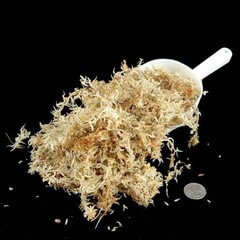
Shred a little, sprinkle it on top of the soil, than sprinkle a little more soil on top to help keep it moist. It helps to keep the top of the soil moist and has anti-fungal properties.Al
Vladimir (Zone 5b Massachusetts)
4 years agoI have rooted citrus, hibiscus, natal plums, geraniums, fig trees and other plants in water and never had a problem with their subsequent development. I have never felt a need to do "a side by side comparison of cuttings rooted in water & cuttings rooted in soil" as Al suggests because all of those cuttings have done well.
tropicofcancer (6b SW-PA)
4 years agoVlad, it is a moot point you are making and sounds more like your are soliciting a reaction. I do all my cuttings/seeds in 511 - sometimes modified and gritty mix and I have had great success too. I can also claim that I did not find a need to do them water and on top it reduces one step of transplanting. Either way it would not be a contradiction of the point Al is making about the difference between the two methods.
Vladimir (Zone 5b Massachusetts)
4 years agoTropic, we each have our own ways of doing things and if 511 and gritty instead of water work for you, that is all well and good.
By the way, I also root cuttings in various soil-less mixes. I generally root in water when I have a lot of one particular kind of cutting because I put all the cuttings in one container.
bayareacalifornia
4 years agoAl, Vlad, and Tropic, I appreciate your comments thank you. Since I am in the situation where all of my cuttings have rooted in water, I will go ahead and plant them in gritty mix and experiment with the soil method in the future. Wish me luck!
tapla (mid-Michigan, USDA z5b-6a)
4 years agoMihi fotunam spera. ..... hoping all efforts yield positive outcomes.
Al
tropicofcancer (6b SW-PA)
4 years agobayareacalifornia: Ficus is generally more forgiving and so you should be OK. They can generally adapt to a variety of conditions within reason. I am pretty sure you will succeed.
eric saga
4 years agoHey Al, after being a novice plant owner for years and dealing with multiple issues, I stumbled upon your incredible wealth of information while in a depresssion-filled Google rabbit hole about my dying weeping fig tree. I have to say, thank you so much for the insane amount of stuff you've helped me learn. I just returned from the store after buying ingredients for your 511 and gritty mix. Excited to start fresh with my 50+ plants!
Can you please help me clarify...should I be using the gritty mix on all my plants if I want to keep them without repotting or putting up for more than a year? Or is it only for woody plants like the weeping fig or fiddle leaf? When would the 511 be more beneficial? Thanks again for improving my experience tenfold in a matter of weeks when I was struggling on my own for years!! You are a legend in my eyes and I've been begging all my plant friends to read your posts!
tapla (mid-Michigan, USDA z5b-6a)
4 years agoWhat a nice compliment, Eric. Thank you very much for taking a moment to share a kind thought!
We all order our priorities differently, so I can help with what to do if your focus is strictly on the plant, and that's generally the perspective I'm keeping when I make suggestions. Often, what's best for the plant and what's best/easiest for the grower, or fits best with the grower's schedule are not the same thing. For example, I can tell you that plants in media that require watering daily or every other day have greater opportunity to realize more of their potential than plants in a medium that only requires water every week or two. Then, it's up to the grower to decide if (s)he's willing to water that often, and if not, how much in terms of lost potential (s)he's willing to sacrifice for whatever interval is considered appropriate. The same is true of repotting and fertilizing intervals. There's nothing judgemental about telling someone they're leaving a lot of potential lying on the table as payment for those 1-2 week watering intervals. It's simply a fact the grower can use to make his/her own judgement re what kind of effort should/shouldn't be made to cut those long intervals by a fraction large enough so they're watering every 2-5 days.
It might be helpful to imagine (realistically) what a perfect medium might be like. No fair wishing for a medium that when in use never requires watering or fertilizing. It would have all particles the same size, just slightly larger than .100", because that's the size at which perched water disappears. Water would be held only inside of particles which are internally porous - but not held so tightly as to be unavailable for uptake, on the surface of particles as a microscopically thin film, at the interface where the particles contact each other, and as water vapor in the macro-pores between soil particles. There would be no liquid water held in the large macro-pores - so no PWT. It would also have a the ability to hold nutrients well. It should also have some adjustability when it comes to water retention.
The gritty mix is the closest thing I've seen to that model, but because it would be unrealistic for most of us, including myself, to try to achieve the model's perfection, we compromise. The Turface MVP is smaller than ideal, the grit larger than ideal, I wish it had a higher CEC ....... I use it a lot because the effort and expense doesn't bother me. I'm serious about building trees that evoke an emotional response, so they must be healthy - hard to expect a weak tree to bounce back from the stress of working it hard. I use the gritty mix when I'm fairly certain the planting won't need repotting until 3 year after it was established. I also use it in combination with all pots shallower than 4", regardless of the length and width; this, because PWTs are a particularly baneful in shallow containers, and a PWT isn't a consideration in any size pot with a properly made gritty mix. Most from-the-bag media support more than 4" of PW. That means in a 4" deep pot, the soil will be 100% saturated after a thorough watering - hard to grow in such an arrangement.
I use the 5:1:1 mix for mixed floral plantings,

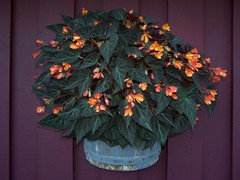


all my containerized veggies - tomatoes, cukes, peppers, anything that will live or I will keep around for only a year (like the plantings above), and plants I know will need repotting on an annual basis - brugmansia, datura, hibiscus, the stuff with really vigorous roots that suffer badly if not repotted every year.Hope that helps, Eric.
Al
eric saga
4 years agoThank you so much for writing back! Where do you live? Love your plants! Most of my plants are the basic run of the mill stuff you find in home depot and nurseries here in the northeast. Bird of paradise, money tree, fiddle leaf fig, yucca palm, corn palm, bromelades, elephant ears, pothos, white lily, somendacaenas, a banana plant, ponytail palms, and a bunch of others...should I try amending the 511 mix to suit their individual needs, or go straight to the gritty mix? I know its it's impossible to answer accurately for such a broad range of plants, but I want something I can safely use on them all with basic adjustments based on what they like. Sorry for so many questions haha, its just exciting to actually hear back from you! I've been dealing exclusively with drainless pots for years, and most of my plants have been performing OK at their best, dying after overwatering at the worst, so I'm ready to put in the work. These will all be indoor plants with avg indoor temp of 73. 50% humidity. Sorry and thanks again!!
mblan13
4 years agolast modified: 4 years agoEric, that is the beauty of the 5-1-1, it's a good "catch all" medium to start with. I started amending my 5-1-1 on year 2. For my Cuphea, straight up 5-1-1 works best. I also grow Salvia that are much bigger (about 6' in the garden bed) and the leaves are very dark green so they need A LOT more water. I am currently planting in 3-2-1 that I reused from last year. Not good for most, but it works well for S. Guaranitica that use a lot of water and won't tolerate wet feet! I have also made it with 1-2 parts of turface too. Go nuts!
eric saga
4 years agoThanks! I think I need to do more homework on each plant type and what it likes, and go from there.
I'll use the 511 for my smaller and floral plants, and gritty for the bigger stuff. Do you think a bird of paradise would be better in gritty or 511?
bayareacalifornia
4 years agoHi All, another gritty mix follow-up question... I have 4 ficus lyrata growing fabulously in gritty mix. I put them in it several years ago (probably 3 yrs), and today I noticed that two have some little roots running around the edge of their containers; parallel to the floor but visible above the top of the gritty mix. Is this a sign that it's time to move up a pot size?
tapla (mid-Michigan, USDA z5b-6a)
4 years agoIf it's been 3 years, they almost certainly would benefit from a full repot. Lift the root/soil mass from the pot (if you can). If it can be lifted so roots/soil remain intact, it's already laboring under limitations associated with root congestion. It doesn't mean your tree is in immediate danger of dying, only that it would benefit from a repot. Most of the Ficus genera will tolerate a lot of root congestion before they die. They won't like it, and it causes loss of potential that becomes more and more severe as congestion increases, but tenacity counts. If you see what you'll be tempted to call a growth spurt after a repot, it will only be your tree saying, "Whew! Now I can grow like I could have been growing all this year had my owner repotted me last year! That's not to be read as criticism or me chiding you - there's none of that in what I'm sharing. When I know I have a tree that needs a repot, but I can't find time, I ask myself if I REALLY want to wait until the next repotting season to repot this tree, or should I repot now. It's usually enough to force me to carve out some time for the tree, but not always. I still have about 20 Ficus and other tropical/subtropical plants to repot. Tic toc!
Al
tropicofcancer (6b SW-PA)
4 years agoAl, And I thought I was late with repotting. That gives me some hope. I too have probably 20 tropicals to take care of. But it has been raining so much here that it is hard to manage to find time. Wish I had good indoor area to do these plant chores. Plus the cooler summer so far means plants have not been doing that great.
Sometimes when I feel I am running out of time I do a quick partial repot. Take out the outer inch or so, bottom third or so and add fresh mix. Then stick a colored tag to indicate it really needs a good repot next year.
bayareacalifornia
4 years agoThanks Al, a repot means putting it back into the same container with fresh medium? I'm using your gritty mix by the way. Don't worry, I will definitely tackle it in the next week. Just need to plan out whether larger pots are needed, and how much of gritty mix materials I need :)
bayareacalifornia
4 years agoTropic, in your partial repot, it goes back into the same pot, not a bigger one, right?
tapla (mid-Michigan, USDA z5b-6a)
4 years agoA full repot includes bare-rooting, root pruning and correction of root issues, and a complete change of soil. I did about 15 of those today on plants that required somewhere between a quart and a gallon of soil. In a perfect world, the first time you repot should be the easiest. Sometimes it is, if you plan on making repotting a regular thing and start when the plant is very small. Usually though, when you buy a woody plant the roots have been grossly neglected, making the first repot the hardest. Fortunately, subsequent repots are much easier.
FYI, when you repot, you usually would need to step DOWN a pot size or two if using a medium based on fine particulates. Usually, with a properly made 5:1:1 you can go smaller or keep the same pot size, while a well-made gritty mix gives you unlimited latitude as far as pot size goes. If a medium doesn't hold perched water, there is no need to be concerned about potential for over-potting a plant.
Good luck!
Al
bayareacalifornia
4 years agoThanks so much Al! With my 3 yrs ago repot I did clean up and trim the roots, so hopefully my repot won't be too bad :) And thanks also for reminding me that gritty mix allows me to use any size pot. I'm doing the repots today!!
tapla (mid-Michigan, USDA z5b-6a)
4 years agoIf you screened all the ingredients to remove the fines, and didn't add anything fine after you screened, you can pot in any size pot; however, if there are fines clogging the spaces between the large particles, you'll need to take pot size into consideration.
Al
tropicofcancer (6b SW-PA)
4 years ago@bay: I guess you got your answers from Al. I usually try to stick to same size pot when I do partial repot. Sometimes I may go a bit up if I want it to grow bigger/fatten up a bit faster. A lot of my plants are in small pots. I have two large Ficus that are in 7 gallon containers and that is the largest container I have for long term plants. I will be downsizing those. 7 gallons of gritty mix is heavy.
tapla (mid-Michigan, USDA z5b-6a)
4 years agoSorry ToC. I was answering the question above the one addressed to you. Looks like I inadvertently stole your thunder when I answered your question, too. I beg a pardon. ;-)
Al
tropicofcancer (6b SW-PA)
4 years agoAl, I was actually glad that you answered it. I noticed the question but I was too busy to reply in time. Plus you take the time to expose the nuances far better. I have learned an incredible amount from you. This week I volunteered to talk about tropicals in our local bonsai club and a lot of what I am going to talk about will be from your teaching - with appropriate citations :))
eric saga
4 years agoHey guys I have a question about the 511 mix. Can I use uncomposted pine bark instead of composted? Wouldnt that technically make the mix last longer? Am I missing something? Thanks for the wealth of info from everyone! Especially @tapla!!! I'm reporting this weekend and was thinking of doing the unconposted pine bark in the 511 so I dont have to worry about it for a ffew years. Thanks!!
bayareacalifornia
4 years agoAl, ToC, or anyone who wants to chime in... when is it too late to repot a ficus lyrata? I wasnt able to do them all the last time (a few wks ago). I’m in the SF Bay Area and today the weather was a little cooler, and it has started getting darker earlier :( And although all my FLFs grew branches and leaves this summer, none have buds that look like they are about to sprout a leaf...
tapla (mid-Michigan, USDA z5b-6a)
4 years agoEric - I use it all the time, but you might need to keep an eye out for symptoms of an N deficiency (chlorosis in older leaves, primarily). Fresh PB immobilizes more N than partially composted PB.
BAC - I repotted 2 large Ficus today, and I'm not concerned. Do you get the marine layer every day? If you share an image, I'll have a better feel for what you should expect insofar as recovery goes.
Al
tapla (mid-Michigan, USDA z5b-6a)
4 years agoYes, but the qualifier is, if you use it often enough and at an appropriate concentration.
Al
bayareacalifornia
4 years agoHi Al, no marine layer for me, but hillsides and lots of trees outside limit the amount of brightest light that my FLFs can receive. I did repot another FLF jsut today - into a much larger pot. Will try to post pics soon
bayareacalifornia
4 years agobtw, I noticed that other peoples' pics don't show as much "flaky bark" on the tree trunks as mine do. Am I supposed to be peeling off the flaky bits on the FLF trunks?
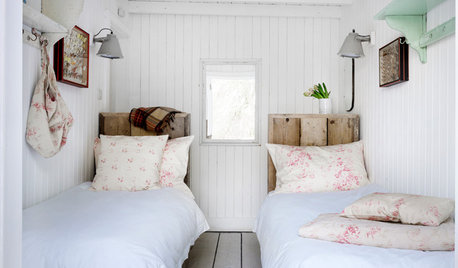

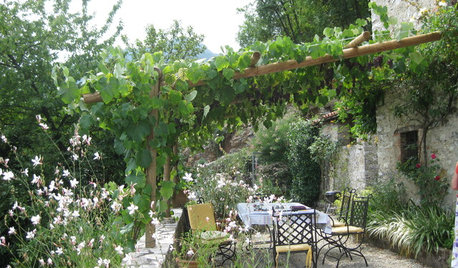
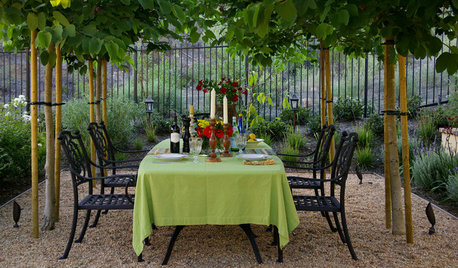
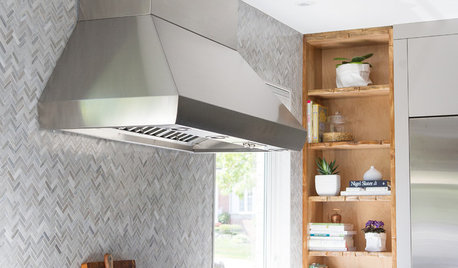
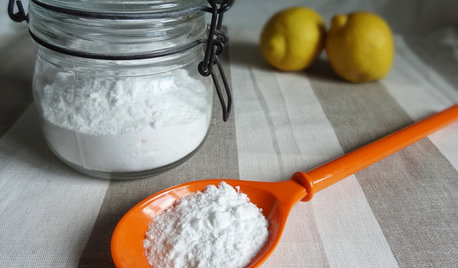



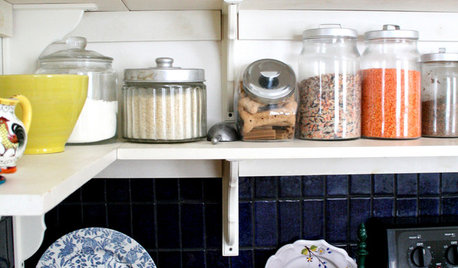








tapla (mid-Michigan, USDA z5b-6a)